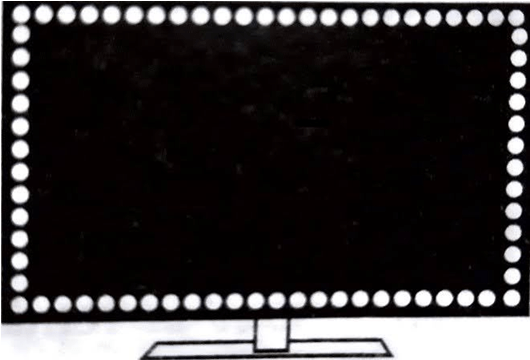This set of Video Engineering Multiple Choice Questions & Answers (MCQs) focuses on “LED TV”.
1. Which semiconductor properties paved the way for the first official LED discovery?
a) Gallium Arsenide (GaAs)
b) Germanium
c) Silicon
d) Silicon Carbide
View Answer
Explanation: In 1907, Henry Joseph Round discovered that the light could be generated from a sample of silicon carbide (SiC). For the next 50 years, scientists were engaged in discovering the light emitting properties that exists with some compounds. In the 1950’s, the properties of gallium arsenide (GaAs) paved the way for the first official LED discoveries that soon followed many others.
2. Semiconductors having extra holes are known as N-type material in LED TV.
a) True
b) False
View Answer
Explanation: The above statement is false. In LED TV semiconductors that have extra holes are known as P-type material, since the material effectively have extra positively charged particles. Electrons can jump from hole to hole, moving from negatively charged area to a positively charged area. As a result, the holes can themselves appear to move from a positively charged area to a negatively charged area.
3. Which type of LED TV is shown in the below figure?

a) RGB dynamic
b) CCFL
c) Full Array
d) Edge-lit
View Answer
Explanation: There are two types of LEDs: (a) Edge-lit (b) Full Array. Edge-lit LED is shown in the figure. In an edge lit screen, the LEDs are placed at the borderline of the screen. Depending on the TV, LED can be present all around the screen or only on the sides or the bottom. This makes the screen looks very thin.
4. What is the approximate power savings in LED TVs?
a) 10 %
b) 40 %
c) 60 %
d) 33 %
View Answer
Explanation: LED backlit TVs are much more power efficient than traditional LCD TVs. Although regular LCDs are relatively cheap, LED cells simply produce more light per watt than fluorescents. This can result in a power savings of approximately 40 percent in LED TVs.
5. LEDs back-lit TVs offers richer color than LED panels.
a) True
b) False
View Answer
Explanation: LEDs back-lit TVs provide richer color than LED panels. This can be done by slightly modifying the color of the white light emitted by the LEDs which compensate for the LCD’s shortcomings. A more advanced solution comes in some of the Sony Bravia models, which has a multi-colored back light to reinforce the image on screen.
Sanfoundry Global Education & Learning Series – Video Engineering.
To practice all areas of Video Engineering, here is complete set of 1000+ Multiple Choice Questions and Answers.
If you find a mistake in question / option / answer, kindly take a screenshot and email to [email protected]
